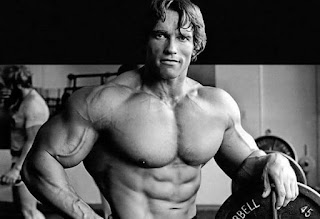Strengthen the chest muscle and Developed to the smith machine
Developed to the smith machine
Developed coated Smith Machine
 |
| إضافة تسمية توضيحية |
Strengthen the chest muscle and Developed to the smith machine
The bench press with the smith machine is a variant of the classic bench press which is practiced thanks to a guided frame. This frame has the advantage of securing the movement and therefore of limiting accidents. But, it also allows for better focus on pectoral work, to dispense with partner and work heavy and / or failure.
On the other hand, the disadvantage when practicing the bench press with the guided frame is that the movement is less natural than with a free bar and that it is not suitable for all morphologies. Moreover, the work is less complete and leaves the muscles stabilizing, which develops less the overall strength.
Muscles used
The muscles required by the bench press to the smith machine are the same as those which are developed by the bench press at the free bar, that is to say the pectorals, mainly, but also the front of the shoulders (the deltoids and the triceps. However, stabilizing muscles, such as serratus, are less used than with a free bar.
Execution of the exercise
The performance is very similar to a developed lying at the helm. Place a bench under the guided bar. Load it with the right weight. Then lie on the bench, head under the bar, with back, buttocks, shoulders and head tacked against the bench. Your feet should rest on the floor, legs at 90 degrees.
Grasp the guided bar with a slightly larger hand gap than the shoulder gap. Your hands are in pronation, so the back of your hands is turned in your direction.
Lift the bar from its safety and control its descent to the middle of your chest. Then, return to the starting position by pushing the bar. Repeat until the end of the series and lock the bar again.
Breathing
Inspire when the bar descends and exhale when pushing it up. If you use a really heavy load, it is possible to block your breathing during the most difficult phase of the exercise.
Safety instructions
At any time of your movement, it is possible to lock the bar on the frame, usually by pivoting the cuffs forward. So, no risk of getting stuck under the bar as at the coated bar.
As with any guided machine, the movement may not be adapted to your morphology. If you experience discomfort or pain, you do not need to worry, think about practicing bench press with dumbbells.
Work at the bench press must be done in full amplitude. However, it is not necessarily necessary to lower the bar too low, especially if you have long arms, as this could over-stretch your pectorals.
Tips for the bench press at the Smith machine
To keep the back well tacked against the bench, it is possible to bend the legs and lay them on the bench. However, this reduces the stability of the position.
In order to carry most of the work on the pectorals, it is important to keep the shoulders against the bench by tightening the shoulder blades. Thus, the front will be less solicited.
Developed coated Smith Machine
The work at the smith machine is particularly interesting to work heavy, to failure or declining, because it is secure. Do not hesitate to take advantage of it.
You can stop at the end of the movement, just before you lock the joints of the elbows, in order to concentrate the tension on your pectorals.
variants
The bench press can also be practiced with a wide grip, in order to better solicit the pecs, especially their external part, or in tight grip in order to emphasize the triceps and the internal part of the pectorals.
It is also possible to use a sloping bench to emphasize the top of the pecs, or declined, to work primarily on the lower of these muscles.
The other direct alternatives to the developed recumbent to the smith machine are the bench press to the free bar or to the dumbbells. These two variants can also be used in inclined or declined versions.
Finally, the work of the pectorals can also be practiced with pumps, dips, lying apart or exercises as the pulley apart opposite.
Share the article!
Read more ...




















No comments